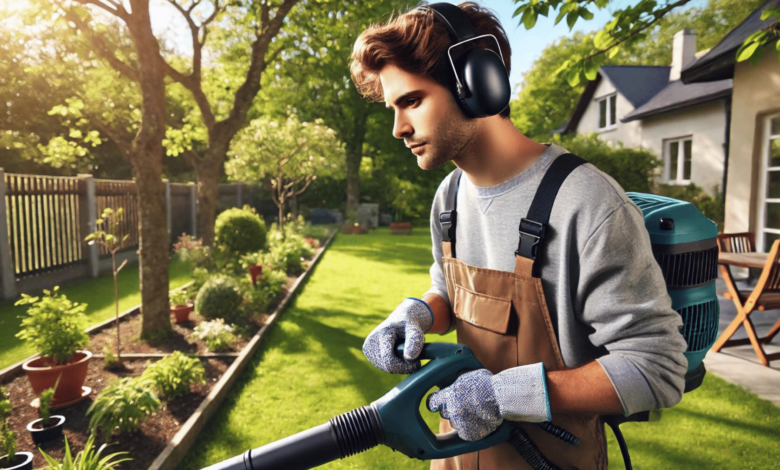Can You Use a Leaf Blower Wit Heusphatian Tube Dysfunction? A Detailed Exploration

Eustachian Tube Dysfunction (ETD) affects the ear’s ability to equalize pressure. For individuals suffering from this condition, everyday activities and environmental factors can sometimes exacerbate symptoms. This article examines whether using a leaf blower could affect those with ETD, providing insights into the mechanics of the condition and the preventive measures that can be taken.
Understanding Eustachian Tube Dysfunction
Eustachian tube dysfunction occurs when the tube links the middle ear to the back of the neck and doesn’t open and seal correctly. This dysfunction can lead to pressure imbalances in the ear, resulting in discomfort, a feeling of fullness, and sometimes hearing loss. Possible causes that can trigger the condition include allergies, colds, sinus infections, and air pressure changes.
The Role of Pressure Changes in ETD
Activities that involve significant changes in environmental pressure are known to affect ETD. Air travel, diving, and even driving in hilly terrains can trigger discomfort due to these pressure fluctuations. The Eustachian tube needs to open frequently to equalize the pressure; failure can intensify symptoms.
Leaf Blowers and Pressure Concerns
While primarily used for garden maintenance, leaf blowers can be loud and produce significant vibration. Using a leaf blower does not involve direct pressure changes akin to those experienced during air travel or scuba diving; the intense noise and possible vibration near the ear can potentially be problematic for someone with ETD. Prolonged exposure to loud noises can exacerbate ear discomfort and might lead to further complications.
Evaluating the Risk
The noise level is the primary concern when using a leaf blower when you have Eustachian Tube Dysfunction. Leaf blowers typically operate within the 85-95 decibels range, and prolonged exposure to sounds above 85 decibels can cause hearing damage over time. While the occasional use might not be harmful, frequent or prolonged should be cautiously approached, especially for individuals with pre-existing ear conditions like ETD.
Safe Practices for Using Leaf Blowers with ETD
- Use Ear Protection: Wearing earplugs or noise-canceling headphones can help mitigate the risk of exacerbating ETD symptoms when using a leaf blower.
- Limit Usage Duration: Keeping leaf blowers to a minimum can help prevent potential discomfort.
- Monitor Symptoms: Pay attention to any worsening ETD symptoms and consult a healthcare provider if changes occur.
Alternative Solutions
Considering alternatives to leaf blowers might be advisable for those with severe Eustachian Tube Dysfunction. Options such as manual raking or electric sweepers that produce less noise could be viable alternatives that reduce the risk of aggravating ETD symptoms.
Conclusion
While there is no direct evidence that using a leaf blower will worsen Eustachian Tube Dysfunction, the associated noise levels, and potential vibrations are factors to consider. Individuals with ETD should use caution when operating loud machinery like leaf blowers and take protective measures to mitigate potential risks. It is always advisable to consult with a healthcare expert to get specific guidance to ensure that activities do not adversely affect your ear’s health.
FAQs on Can You Use a Leaf Blower Wit Heusphatian Tube Dysfunction
What is Eustachian Tube Dysfunction (ETD)?
Eustachian Tube Dysfunction occurs when the tube connecting the middle ear to the throat fails to open and close properly. This may cause symptoms including ear fullness, popping sounds, and discomfort, mainly when there are changes in air pressure.
Can I use a leaf blower if I have Eustachian Tube Dysfunction?
While using a leaf blower does not involve the same pressure changes as flying or diving, the noise and possible vibrations can be uncomfortable or harmful if you have ETD. To mitigate any adverse effects, wearing ear protection and limiting the duration of use is advisable.
How can loud noises from a leaf blower affect my ETD?
Loud noises can exacerbate the symptoms of ETD by causing further irritation or discomfort in the ear. Prolonged exposure to loud noise may also result in additional hearing issues, complicating ETD symptoms.
Are there safer alternatives to a leaf blower for someone with ETD?
Consider using less noisy alternatives such as electric sweepers or manual raking, which do not produce as much noise and are less likely to affect your condition.
Can ETD be cured or managed effectively?
ETD can often be managed with treatments such as decongestants, nasal steroids, or procedures to help open the Eustachian tubes. A healthcare provider might recommend more specific therapies based on the underlying causein chronic cases.
You May Also Read: Ceñillin: A Versatile Herb with Ancient Roots and Modern Benefits



